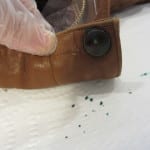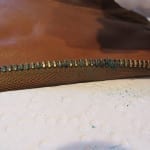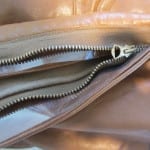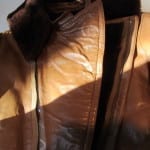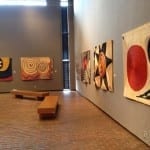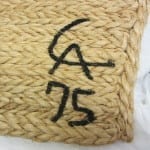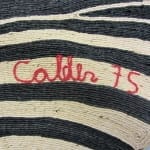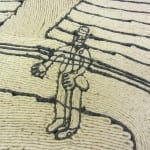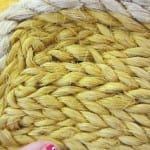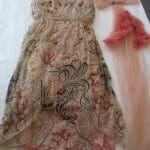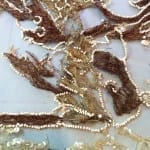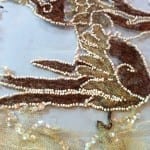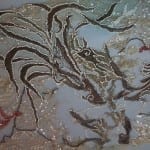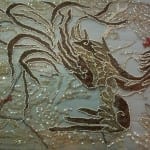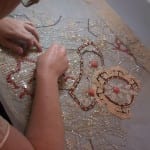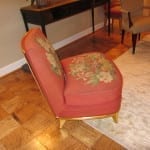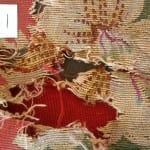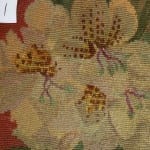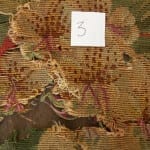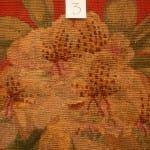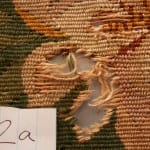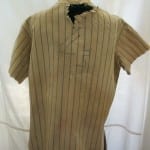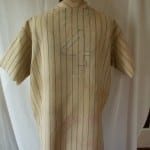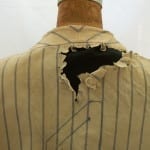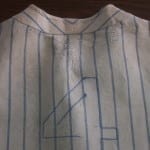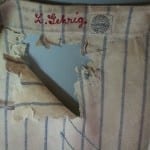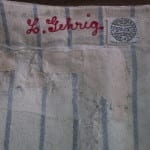Howard Hughes Medical Institute, The Pilot Lounge, 2013
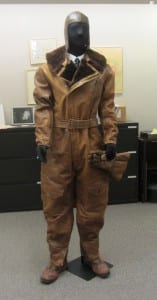
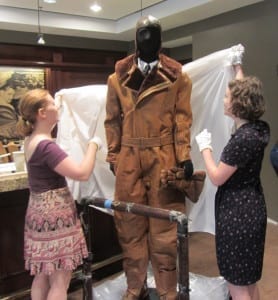 Howard Hughes, legendary aviator and inventor, founder of Hughes Aircraft and the Howard Hughes Medical Institute, and owner of TWA wore this suit in his 1920’s flights. Custom- made by the fabled outdoor apparel firm Abercrombie and Fitch, it is supple leather lined with fur. Conservation treatment involved a lengthy removal of corrosion on all the metal components, due to the reaction between the leather tanning and the metal. A mannequin was crafted and the suit, along with boots, cap, gloves and goggles are preserved for future generations to learn from and enjoy.
Howard Hughes, legendary aviator and inventor, founder of Hughes Aircraft and the Howard Hughes Medical Institute, and owner of TWA wore this suit in his 1920’s flights. Custom- made by the fabled outdoor apparel firm Abercrombie and Fitch, it is supple leather lined with fur. Conservation treatment involved a lengthy removal of corrosion on all the metal components, due to the reaction between the leather tanning and the metal. A mannequin was crafted and the suit, along with boots, cap, gloves and goggles are preserved for future generations to learn from and enjoy.
Conservation of Calder Wall Hanging Collection at Berea College October 2012: A Collaborative Teaching and Preservation Project with Berea Museum Studies and Gallery Students
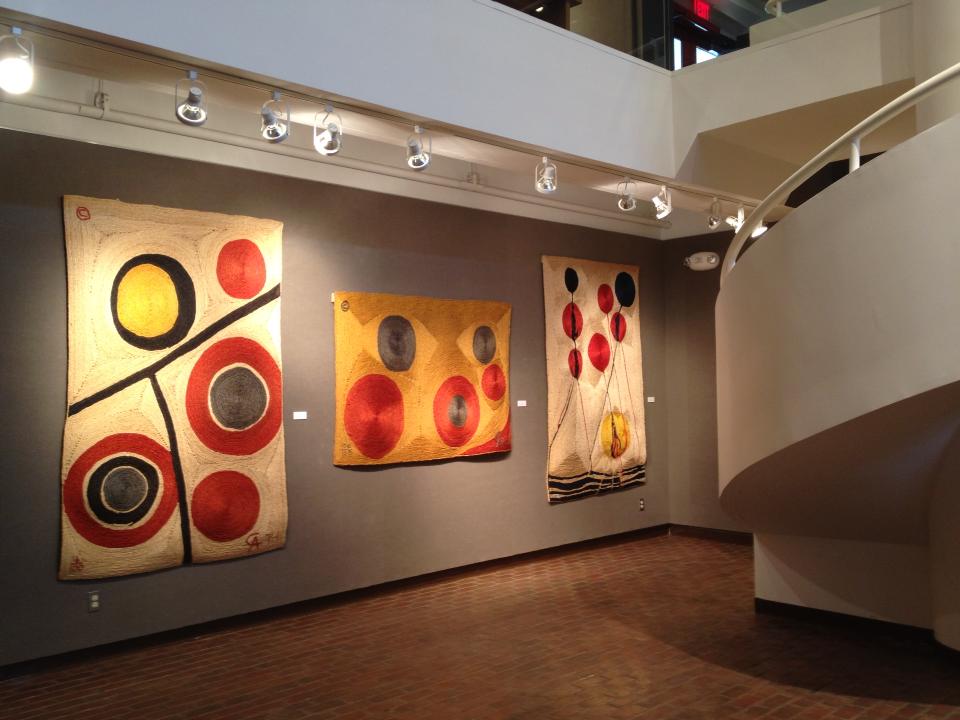
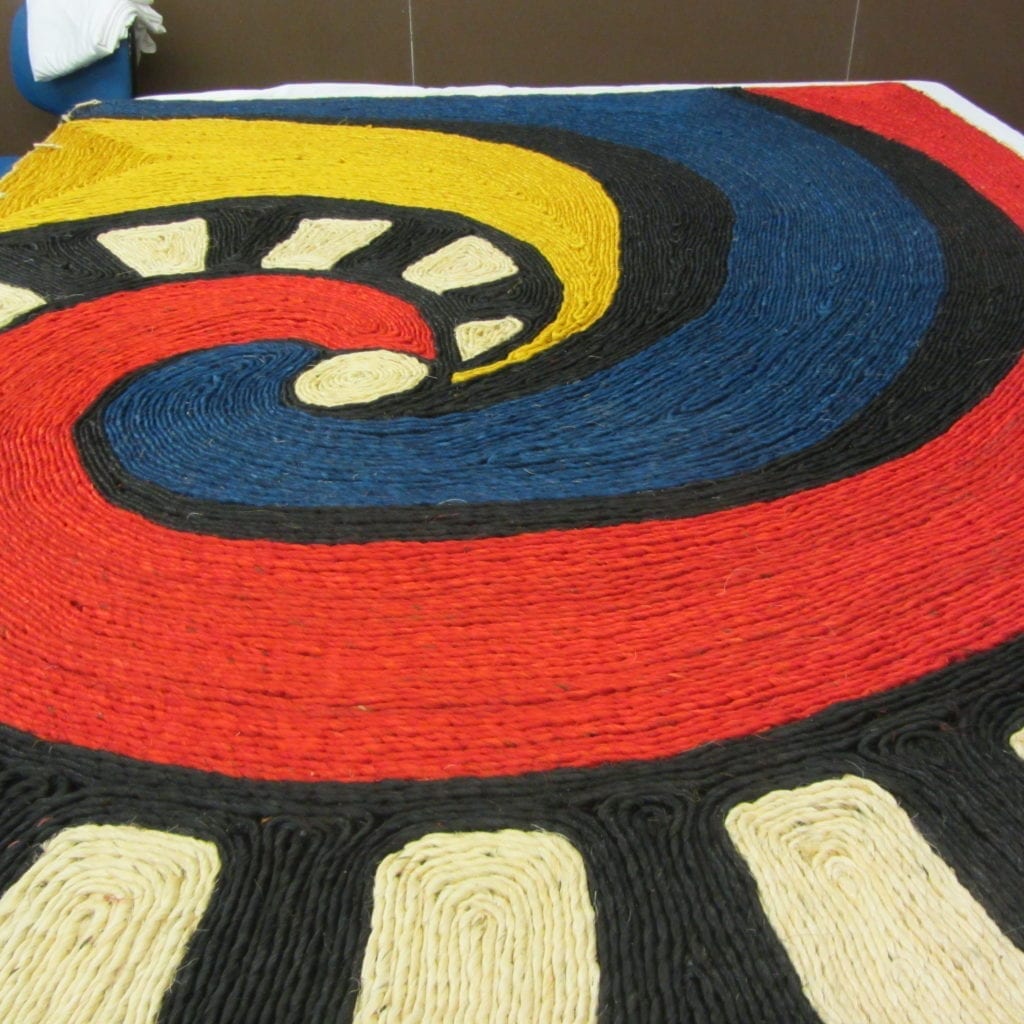 This whimsical and colorful series of 14 plant fiber wall hangings were designed by Alexander Calder and then fabricated by hand in Guatemala in 1974 and 1975. They were part of a sustainable relief project, initiated by Mrs. Alvin Meyer) to provide support and livelihood for indigenous people after the earthquake of 1972. Indians in remote villages of Guatemala, who had a long tradition of weaving, used colored hemp to weave these wall hangings. The project aimed to preserve the traditional skills to execute works of modern artists. 100 sets of 14 hangings were produced and sold.
This whimsical and colorful series of 14 plant fiber wall hangings were designed by Alexander Calder and then fabricated by hand in Guatemala in 1974 and 1975. They were part of a sustainable relief project, initiated by Mrs. Alvin Meyer) to provide support and livelihood for indigenous people after the earthquake of 1972. Indians in remote villages of Guatemala, who had a long tradition of weaving, used colored hemp to weave these wall hangings. The project aimed to preserve the traditional skills to execute works of modern artists. 100 sets of 14 hangings were produced and sold.
Mirroring the project by Calder and the indigenous people of Nicaragua and Guatemala, the onsite Berea College preservation work was achieved through the collaboration between outside conservation professionals and art-based students. The tradition of the Berea Labor Program was incorporated into the Calder preservation project. Like the craft-based relief project that produced these artifacts, the preservation project was based on a model of sustainability and opportunity.
Each wall hanging was stabilized after years of exposure and wear and tear. Tasks included carefully surface cleaning, repairing where needed, and preparing for both display and storage. A celebratory exhibit of all 14 opened in January 2013.
httpv://www.youtube.com/watch?v=YUmsXjW9RK0&feature=youtu.be
The Paquin Gown, 2012
This couture gown originated in the Parisian Paquin couture house in the 1920s. Over time, its delicate silk netting became too fragile and brittle to support the sumptuous decorations of sequins, glass beads, metal threads, and coral. Each exquisite panel of the dress had to be carefully disassembled, lined with new netting, and reconstructed, reattaching all bead-work and embellishments. The treatment of the dress took 450 hours to complete. The dress was gifted to the Fashion Institute of Design and Merchandising in California.
- Before
- After
- Before
- After
The SS Normandie Chair, 2011
The fabled and doomed SS Normandie was the height of luxury at sea during the gilded age. This one-of-a-kind Aubusson tapestry slipper chair arrived at the studio in tatters, with extreme loss throughout its floral motif. Its conservation required botanical research and close study of similar chairs to reproduce the unique patterns. Custom dyed wool and yarns were used to carefully reweave the original tapestry and beauty of the chair. This painstaking restoration took over 400 hours.
Signature Quilt, 1864, and Lincoln’s Great Coat, 1865
The quilt, made of red, blue and white silk, contains the gall ink signatures of President Lincoln, his Cabinet and many other notable citizens of the day. It was made during the Civil War as an auction item to raise funds for the Philadelphia Sanitary Fair. Conservation included extensive repair to torn silk patches, reconstruction of torn corners, and preparation and securing to a padded slant mount for display.
Lincoln’s Greatcoat was made for his second inaugural in 1865 by Brooks Brothers, NYC. President Lincoln had the coat with him at Ford’s Theater the night he was assassinated. The inside silk lining is quilted with a pattern of eagles holding pennants which read “One Country, One Destiny.” This extraordinary piece of American history was given by Mrs. Lincoln to her husband’s favorite Executive Mansion usher, Mr. Donn, in 1865. Through his family, it passed down to the US Park Service.
Lou Gehrig’s 1931 Yankee’s wool jersey
This priceless piece of sports memorabilia was on its way to auction to fetch the big bucks but took a little diversion for a pre-sale cleaning. Oops, perhaps the bleach or other agents were too strong for the old wool and stains. The disfiguring holes in the back, neck, and shoulders were shoddily disguised. In order to regain some of its value, Caring for Textiles removed the damaging repairs, realigned the remains of the original wool, and used a very lightweight support cloth and similar wool to reconstruct the large areas of loss.
- Before
- After
- Before
- After
- Before
- After
